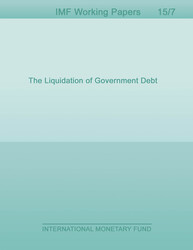
The Liquidation of Government Debt
High public debt often produces the drama of default and restructuring. But debt is alsoreduced through financial repression, a tax on bondholders and savers via negative or belowmarketreal interest rates. After WWII, capital controls and regulatory restrictions created acaptive audience for government debt, limiting tax-base erosion. Financial repression is mostsuccessful in liquidating debt when accompanied by inflation. For the advanced economies,real interest rates were negative ½ of the time during 1945–1980. Average annual interestexpense savings for a 12—country sample range from about 1 to 5 percent of GDP for the full1945–1980 period. We suggest that, once again, financial repression may be part of thetoolkit deployed to cope with the most recent surge in public debt in advanced economies.
Publication date: January 2015
ISBN: 9781484369234
$18.00
Add to Cart by clicking price of the language and format you'd like to purchase
Available Languages and Formats
| English |
Prices in red indicate formats that are not yet available but are forthcoming.
Topics covered in this book
This title contains information about the following subjects.
Click on a subject if you would like to see other titles with the same subjects.
Economics- Macroeconomics , Economics / General , International - Economics , deleveraging , inflation , financial repression , public debt
Summary
Copyright © 2010 - 2024
Powered by:
AIDC



